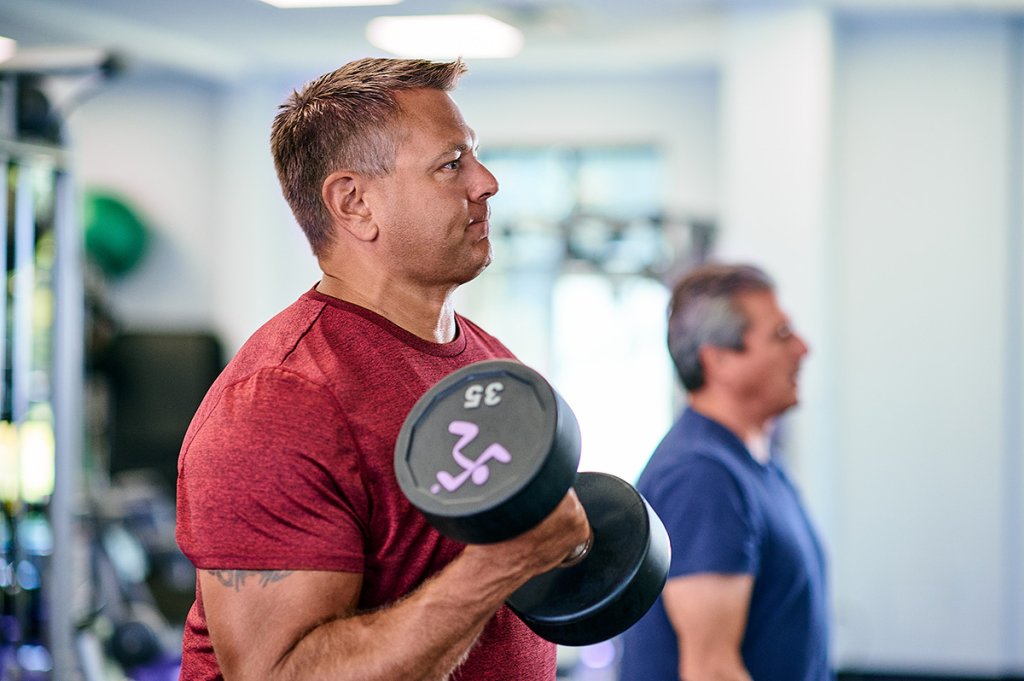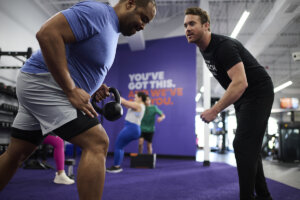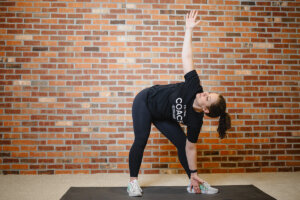Whether you’re stuck in a strength training rut, have hit a plateau with your progress, or just want to mix things up, techniques such as supersets, drop sets, and cluster sets are great ways to take your workout to the next level. While each of these “intensity boosters” use a slightly different method, they can all help you get more out of your next workout by challenging your muscles in new ways.
We’re breaking down everything you need to know about supersets and other strength training methodologies in this comprehensive guide — complete with a full-body superset workout that will maximize your muscle-enhancing potential.
What is a superset?
Of all the strength-training methodologies out there, supersets tend to be the most commonly referenced. A superset is a strength-training technique that involves performing two exercises of opposing muscle groups, back to back without rest. While traditional strength workouts allow you to take a break between sets, supersets eliminate this recovery time to increase the intensity of your workout.
What are the benefits of supersets?
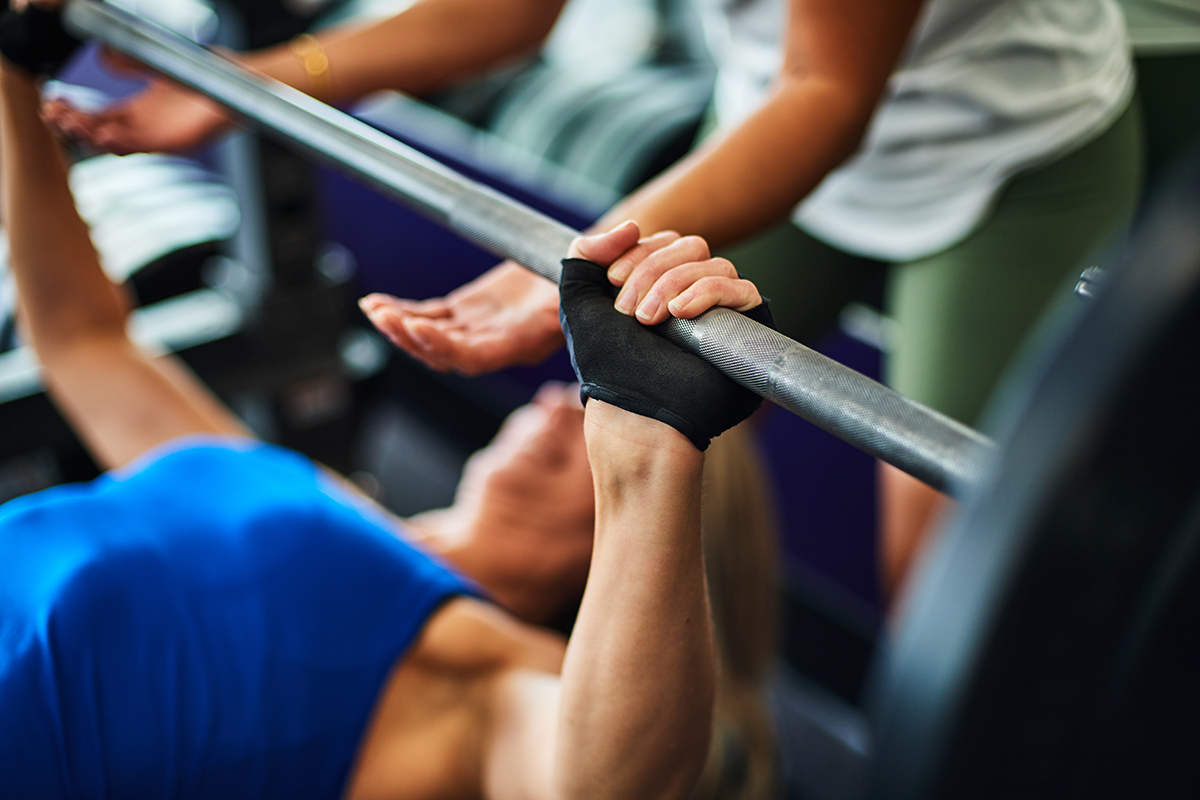
There are plenty of benefits of supersets, from allowing you to get more done in less time to helping you push past fitness plateaus.
- Greater efficiency: By upping the intensity of your workout, you’re naturally able to achieve more in less time.
- Muscle-boosting potential: When you increase the amount of time your muscles are under tension without rest, you can supercharge your muscle growth.
- Increased fat burn: Added intensity will require added energy expenditure, leading to more fat and calorie burn.
- Added cardio: Because supersets eliminate rest periods, your workout intensity increases. This causes your heart to work harder, providing added cardiovascular benefits. When your workout intensity increases, your heart rate goes up, providing a cardiovascular benefit as well.
- Build stamina: By eliminating the typical recovery time between sets, you’ll build stamina and endurance, helping you push past any fitness plateaus and start to see new results.
Let’s explore two of these benefits in-depth: increased fat burn and increased muscle growth.
How do supersets build muscle growth?
Increased time under tension requires your muscles to work harder for longer. Plus, pairing opposing muscle groups together ramps up how intensely your muscles need to work. Anytime Fitness Coach Mike Voorhees, NASM-CPT, FNS, explains it this way: A muscle will contract with more force when preceded by contractions of the opposing muscle group.
“For example, we can increase our strength on the row by performing bench presses immediately before rows,” Coach Mike says. “This strength boost will lead to an increase in muscle mass over time.”
Do supersets burn more calories and fat than traditional exercises?
By challenging your muscles with an intensity-boosting move like a superset, you’re also increasing your calorie and fat burning potential.
“Completing two exercises back-to-back without rest can burn about 30% more calories than you would by doing just one exercise at a time,” Coach Mike says.
A comparative study also found that people who performed supersets had “significantly greater” energy expenditure during and after their workout than people who performed traditional strength-training workouts.
Which exercises can I superset?
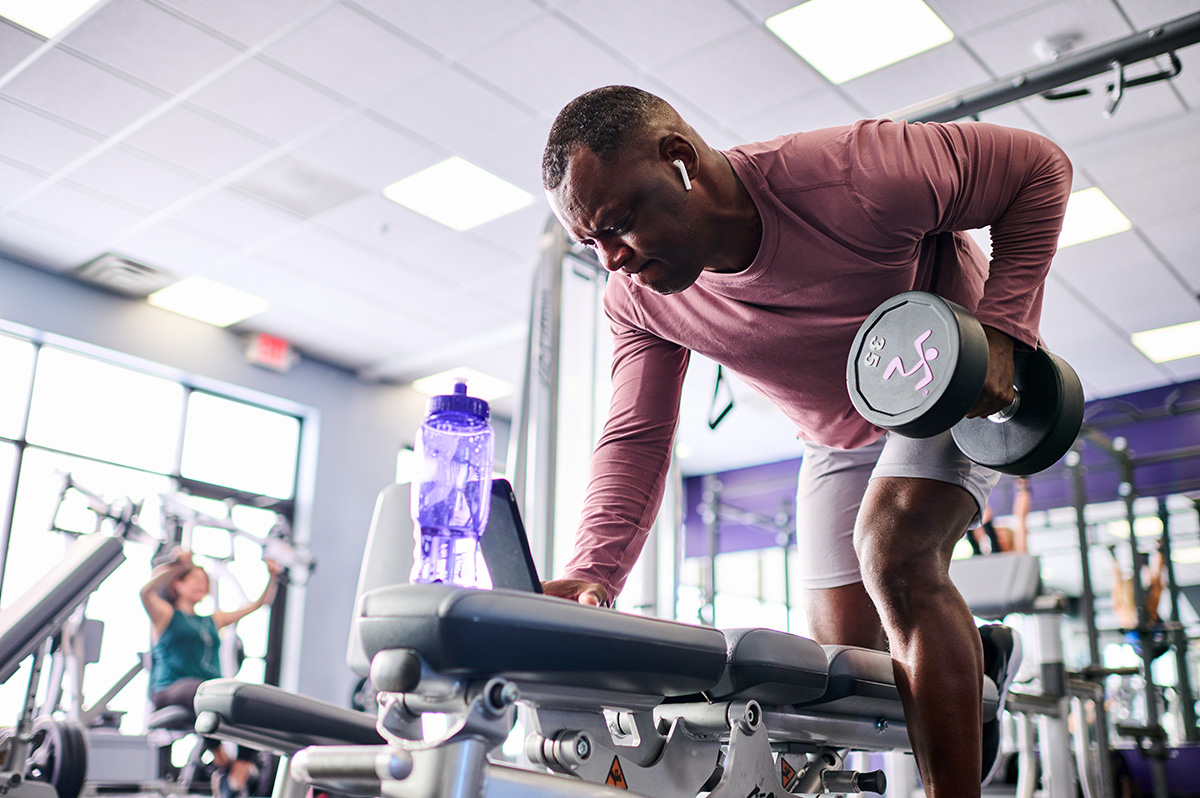
You can superset any set of exercises that work opposing muscle groups back to back. We’ll get into a full-body superset workout in a moment, but if you want to try some superset exercises on your own, here are some examples of opposing muscle groups to try, both with your upper body and lower body:
- Chest and back
- Biceps and triceps
- Quadriceps and hamstrings
- Shoulders and upper back
- Abdominals and low back
What are cluster sets?
Cluster sets are another popular training methodology that involve adding in rest breaks instead of eliminating them. While supersets get rid of the rest period between sets, cluster set workouts use additional breaks between the reps themselves. Why would you want to do this?
There are a few key benefits to cluster set workouts, but overall, adding in more rest periods can decrease the fatigue accumulated within your set, allowing the potential for more repetitions or heavier weights than would be possible with a continuous set.
What are drop sets?
Drop set workouts involve performing as many reps as you can until your muscles are fatigued. After this, you drop the weight by 20%–30%, take a short rest, and then repeat the exercise each time until fatigued again.
Drop set workouts help promote muscle endurance and muscle hypertrophy, and are usually best reserved for experienced lifters.
What are other ways to maximize my workouts?

Aside from supersets, cluster sets, and drop sets, there are tons of other ways to shake up your next strength training session and push past plateaus. Each of the methodologies below uses slightly different rules in order to achieve different results. Try some of them during your next gym session to get more from your workouts.
- Compound sets are a lot like supersets: they’re two exercises performed back to back without rest. Unlike supersets, however, compound sets utilize exercises of the same muscle group.
- Tri-sets consist of — you guessed it — three exercises performed back to back. They can include the same or opposing muscle groups.
- Giant sets are four or more exercises done back to back. Similar to tri-sets, they can utilize the same or opposing muscle groups.
- Rest-pause sets are an intensity technique where you set the weight down after each rep, rest for 10 to 15 seconds, then rep it out again.
Full-Body Superset Workout
Ready to up the intensity of your strength training session with a full-body superset workout? Coach Mike has put together this comprehensive superset workout to improve your stamina, build muscle, and shake up your typical routine.
1. Barbell Bench Press x Bent Over Row
Perform 3 sets of 8–12 reps each.
- Lying with your back on a bench, plant your feet on the ground and keep your back flat.
- Grab the bar with an overhand grip with hands just outside of your shoulders.
- Drive your feet into the ground, brace your core, and lift the bar off the rack. Lock your elbows and position the barbell so that it’s directly above your chest.
- Lower the bar down toward your chest, pausing once the bar touches your chest.
- Push the bar back up until your arms are extended and your elbows slightly bent.
- Stand upright while holding the barbell using a double overhand grip.
- Hinge forward until your torso is roughly parallel with the floor
- Drive your elbows behind your body while retracting the shoulder blades.
- Pull the bar toward your belly button until it touches your body and then slowly lower the bar back to the starting position.
2. Front Squat x Romanian Deadlift
Perform 3 sets of 8–12 reps each.
- Stand under a racked barbell and grab the barbell using either a clean grip or bodybuilder grip. Rest the barbell on your shoulders (not your neck or collarbone).
- Lift the bar off the rack and engage your core. Stand with your feet slightly wider than shoulder-width apart and your toes pointed out.
- Push your butt back and lower down into the squat until your thighs are parallel to the ground.
- Drive your feet though the floor to lift back up.
- Stand with your legs hip-width apart. Hold a barbell or a pair of dumbbells down at your thighs.
- Hinge at the hips and come down with a flat back until your wrists cross below your knees and your back is parallel with the floor.
- Return back up to the standing position.
3. Barbell Upright Row x Wide Grip Pulldown
Perform 3 sets of 8–12 reps each.
- Hold a fixed barbell at your waist with your palms facing backward.
- Keeping your lower body steady, bend your elbows upward to 90 degrees to raise the barbell. Avoid shrugging your shoulders.
- Slowly return the barbell to the starting position.
- Hold the bar with both hands wider than shoulder-width apart.
- With the bar in your hands, slowly sit down on the bench and inch your body into position, with your knees at a 90-degree angle and feet flat on the floor.
- Slowly pull the bar to chest level, squeezing your shoulder blades and lats together. Keep your chin and chest out, neck straight and relaxed, and elbows back.
- With control, return the bar to the starting position.
4. Cable Triceps Pushdown x Dumbbell Bicep Curl
Perform 3 sets of 8–12 reps each.
- Grip the rope with both hands at chest level. Keep your elbows bent and tucked into your sides.
- Push your hands down, fully extending your arms and keeping your shoulders steady.
- Slowly bend your elbows and bring your hands back to the starting position.
- Hold dumbbells down in front of you with your arms straight and palms facing outward. Keep your feet shoulder-width apart.
- Raise the weights up to your shoulders with control, keeping your elbows at your sides. Avoid jerking or swaying and keep your upper body stable through each rep.
- Pause at the top and take a breath before slowly lowering the bar back to the starting position. Avoid locking your elbows.
5. Loaded Carry x Plank
Perform 3 sets of 30–60 seconds each.
- Grab two kettlebells or dumbbells. Hold them down at your sides and walk around.
- Keep your posture straight and don’t allow the kettlebells to lean on your thighs.
- Lie face down on the floor with your legs straight and arms tucked in by your sides.
- Raise your body off the floor, resting on your toes and palms.
- Try to maintain your body in a straight line and keep your back neutral/flat.
A final word on supersets and other strength-training methodologies
Shaking up your strength training routine is a great way to break free of an exercise rut or push past plateaus. However, when you increase the intensity of your workouts you’ll likely want to be more vigilant about the proper post-workout care — nutrition, hydration, and rest — in order to ensure your body adjusts to your new workout challenges or modifications.
If you have any concerns about increased muscle soreness, fatigue, or simply how to ensure the proper form for supersets or other exercises, you can always consult a personal trainer to ensure you’re making progress in a safe manner.
Anytime Fitness Coaches are trained and ready to provide specific, personalized plans that help people level up their workouts and push past plateaus. Team up with an Anytime Fitness Coach today. We’re here to help you achieve your fitness goals — anytime, anywhere.

Coach Mike Voorhees, NASM-CPT, FNS
Coach Mike found his passion for helping people working as a Coach at Anytime Fitness five years ago. Since then, he’s guided hundreds of people toward their fitness goals. Mike’s coaching philosophy resonates on and off the purple turf as he strives to help you become a stronger and more fulfilled version of yourself.
Mike received his Masters in Exercise Science from Concordia University, St. Paul. He is NASM CPT & FNS-certified and an ISSA Exercise Recovery Specialist. Other certifications include corrective exercise, pain-free performance, TRX training, kettlebell training, and more.
